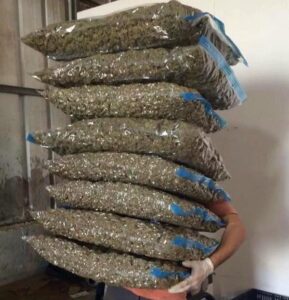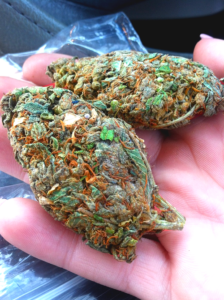
🌿 Introduction: Cannabis in Al Badrashayn
Al Badrashayn, a district in the Giza Governorate of Egypt, is renowned for its rich agricultural landscape, particularly its date palm cultivation. While the area is not officially recognized for cannabis cultivation, the plant has historical significance in Egypt and has been used for various purposes over millennia. This article delves into the historical context, current legal status, and the broader implications of cannabis in the region. Weed in Al Badrashayn
🏺 Historical Context: Cannabis in Ancient Egypt Weed in Al Badrashayn
Cannabis has a long-standing presence in Egyptian history. Evidence suggests that the ancient Egyptians utilized cannabis for medicinal, industrial, and possibly psychoactive purposes. The term “shemshemet” is believed to refer to cannabis in ancient Egyptian texts. Traces of cannabis have been found in the mummified remains of pharaohs, indicating its use in embalming and possibly for therapeutic reasons (Dragon Cannabis).
The Ebers Papyrus, dating back to around 1550 BCE, contains references to cannabis as a treatment for various ailments, including inflammation and glaucoma (CannaConnection). Additionally, cannabis fibers were used in the construction of the pyramids, demonstrating its importance in ancient Egyptian society.
🌾 Agricultural Landscape of Al Badrashayn Weed in Al Badrashayn
Al Badrashayn is situated in the fertile Nile Delta, benefiting from the river’s irrigation system. The region is primarily known for its date palm cultivation, producing some of the finest dates in Egypt. The agricultural practices in Al Badrashayn are characterized by traditional methods, with a focus on sustainable farming.
While cannabis is not a staple crop in Al Badrashayn, the region’s agricultural expertise and favorable climate conditions could potentially support its cultivation. However, the legal restrictions and societal norms present challenges to its widespread adoption.
⚖️ Legal Status of Cannabis in Egypt Weed in Al Badrashayn
Cannabis use is illegal in Egypt; however, it is widely used privately and informally tolerated in some regions. Law enforcement is often lax when it comes to cannabis smokers, and its use is a part of the common culture for many people in Egypt. However, large-scale smuggling of cannabis is punishable by death, while penalties for possessing even small amounts can also be severe (Wikipedia).
Despite its illegal status, cannabis has been historically significant in Egypt, and discussions about its potential legalization for medicinal or industrial purposes continue to surface.
🌍 Broader Implications: Cannabis Cultivation in the Middle East Weed in Al Badrashayn
Cannabis cultivation in the Middle East has been a topic of debate. While some countries have legalized or tolerated its cultivation, others, like Egypt, maintain strict prohibitions. In Lebanon, for instance, cannabis cultivation was legalized for medicinal and industrial purposes in 2020. However, the lack of regulation and political disputes have hindered its development (The MENA Chronicle | Fanack).
In contrast, Egypt’s stance on cannabis remains conservative, with the government focusing on combating illegal cultivation and trafficking. The potential economic benefits of legalizing cannabis cultivation are often weighed against concerns about public health and societal norms.
❓ Frequently Asked Questions (FAQs)
1. Is cannabis cultivation legal in Al Badrashayn?
No, cannabis cultivation is illegal in Al Badrashayn and throughout Egypt.
2. Has cannabis been used in Al Badrashayn historically?
While there is no specific evidence of cannabis use in Al Badrashayn, ancient Egyptian texts and archaeological findings suggest that cannabis was used for medicinal and industrial purposes across Egypt.
3. Could Al Badrashayn support cannabis cultivation?
Given its favorable climate and agricultural expertise, Al Badrashayn could potentially support cannabis cultivation. However, legal and societal challenges would need to be addressed.
4. What are the penalties for cannabis possession in Egypt?
Penalties for possessing cannabis in Egypt can be severe, including imprisonment and fines. Large-scale smuggling can result in the death penalty.
5. Are there any movements towards cannabis legalization in Egypt?
While discussions about cannabis legalization for medicinal or industrial purposes occur, Egypt maintains a conservative stance on the issue.
🔗 Outbound Links for Further Reading
- Cannabis in Egypt – Wikipedia
- Ancient Egypt and Cannabis – Dragon Cannabis
- Cannabis Cultivation in the Middle East: Problem or Solution? – Fanack
- Visit Badrashin! Project
📚 Conclusion
While Al Badrashayn is not known for cannabis cultivation, the region’s rich agricultural heritage and the historical significance of cannabis in Egypt provide a unique context for understanding the plant’s role in the area. The legal landscape remains restrictive, but ongoing discussions about cannabis’s potential benefits continue to shape the future of its cultivation and use in Egypt.
Policy and institutional support needed
To make the above practical and scalable in Al Badrashayn, supportive policy and institution work helps:
- Subsidized farmer training in IWM and soil health, funded by governorate programs or development projects.
- Accessible, transparent guidance on safe herbicide use from local agricultural offices; avoid informal or unsafe application practices.
- Support for community composting and small-scale organic input producers so local farms can access affordable soil amendments.
- Coordination between tourism authorities and agriculture extension services to align vegetation management near heritage sites. (Yellow Pages Egypt)
Future challenges and opportunities
Climate variability, changing water availability and market pressures will shape weed issues. A few trends to watch:
- Water stress may shift cropping patterns, which will change weed communities; drought-tolerant crops could bring new weed assemblages.
- Urban expansion from greater Greater Cairo might convert some agricultural land to peri-urban uses, creating different weed control needs (e.g., roadside maintenance, vacant lot management).
- Growing interest in sustainable tourism and farm-to-table experiences can incentivize reduced chemical use and better soil management, turning weed control into a branding and market opportunity. (Landious Travel)
Conclusion — a balanced view
Weed control in Al Badrashayn is not a narrow technical issue but a cross-cutting challenge that ties together crop productivity, water management, heritage conservation and rural livelihoods. The best path is integrated: local knowledge (manual weeding, traditional rotations) combined with modern tools (targeted herbicide use, improved irrigation scheduling), stronger extension services, and community coordination. Added value comes when weed management is integrated with soil health, local organic inputs and tourism initiatives that reward sustainable practices. With coordinated action among farmers, local authorities, researchers and tourism managers, Al Badrashayn can reduce the costs of weeds while protecting its soil, water and cultural assets. (curresweb.com)
I have used Global Weedworld (Globalweedworld@galaxyhit.com) at least 4-10 times and every time it has been a top notch.
He is the best local plug you can find around. He is very pleasant, friendly and fast. He is a lifesaver.
He sells top shelf WEED and other stuffs at moderate prices. I will always recommend this guy when people ask me my ” go-to”.
All you have to do is follow his instructions.
Just send him an email and I bet you will come back for more once you finish with what you bought because his quality is amazing.
Also Contact him on his telegram link telegramhttps://t.me/GlobalweedWorld
⚠️ Know that he do not have telegram channels only the telegram link above

The strain was exactly what I was looking for. It had that perfect balance, and the high was smooth. Also, the packaging was discreet and professional. Really impressed
I’ve been buying online for a while, but this shop’s service and product quality set them apart.
Everything was fresh, potent, and the customer service is outstanding
My first purchase and I’m hooked.
Excellent product and the customer support was super helpful in answering all my questions. Highly recommend this site
From browsing to checkout, everything was seamless. Delivery was on time, and the product exceeded my expectations.
I’ll be recommending this to my friends
I’ve been buying from a lot of different places, but this one stands out. The bud is top-notch, and the prices are reasonable.
Will be ordering again soon! Amazing experience! The product was exactly as described,
and the packaging was on point—safe and odor-free. Thank you!
Fast shipping and top-shelf quality
Discrete packaging. Love that.
This is hands-down the best bud I’ve bought online.
Never going back to the local shop again.
Quality is always on point
Smells amazing, hits even better.
Third order in a row — flawless.
You guys NEVER disappoint.
Best decision I made all week.
Shipping was crazy fast, and the product…
I was worried about ordering online, but the packaging was perfect completely. You can tell they care about their customers. Fast replies and reliable support.